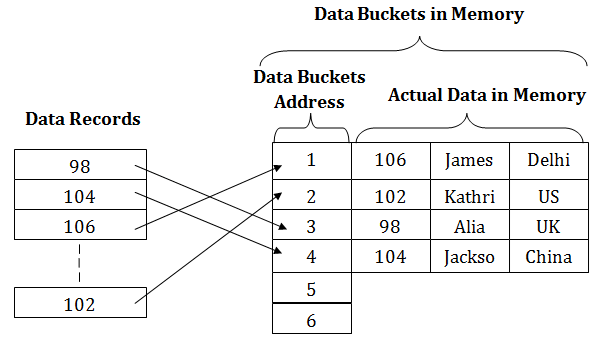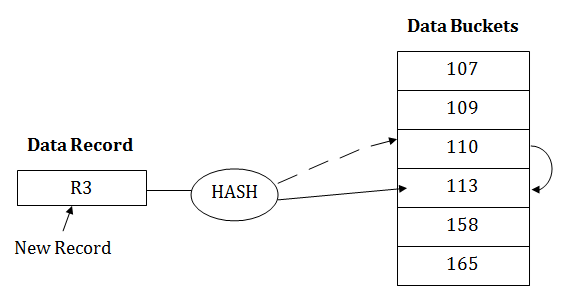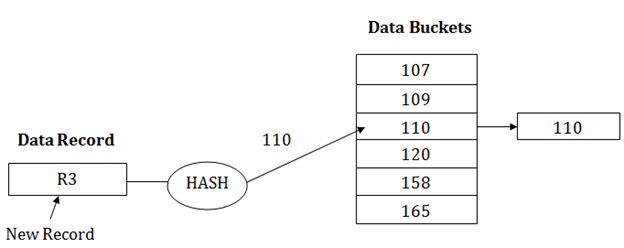Static HashingIn static hashing, the resultant data bucket address will always be the same. That means if we generate an address for EMP_ID =103 using the hash function mod (5) then it will always result in same bucket address 3. Here, there will be no change in the bucket address. Hence in this static hashing, the number of data buckets in memory remains constant throughout. In this example, we will have five data buckets in the memory used to store the data. 
Operations of Static Hashing
When a record needs to be searched, then the same hash function retrieves the address of the bucket where the data is stored.
When a new record is inserted into the table, then we will generate an address for a new record based on the hash key and record is stored in that location.
To delete a record, we will first fetch the record which is supposed to be deleted. Then we will delete the records for that address in memory.
To update a record, we will first search it using a hash function, and then the data record is updated. If we want to insert some new record into the file but the address of a data bucket generated by the hash function is not empty, or data already exists in that address. This situation in the static hashing is known as bucket overflow. This is a critical situation in this method. To overcome this situation, there are various methods. Some commonly used methods are as follows: 1. Open HashingWhen a hash function generates an address at which data is already stored, then the next bucket will be allocated to it. This mechanism is called as Linear Probing. For example: suppose R3 is a new address which needs to be inserted, the hash function generates address as 112 for R3. But the generated address is already full. So the system searches next available data bucket, 113 and assigns R3 to it. 
2. Close HashingWhen buckets are full, then a new data bucket is allocated for the same hash result and is linked after the previous one. This mechanism is known as Overflow chaining. For example: Suppose R3 is a new address which needs to be inserted into the table, the hash function generates address as 110 for it. But this bucket is full to store the new data. In this case, a new bucket is inserted at the end of 110 buckets and is linked to it. 
Next TopicDynamic Hashing
|
 For Videos Join Our Youtube Channel: Join Now
For Videos Join Our Youtube Channel: Join Now
Feedback
- Send your Feedback to [email protected]
Help Others, Please Share










